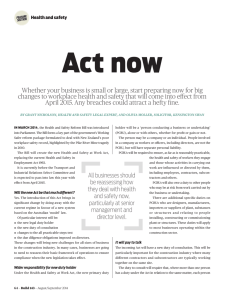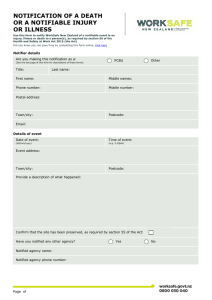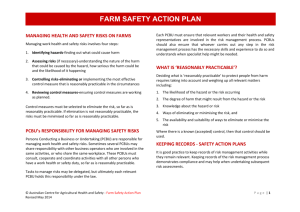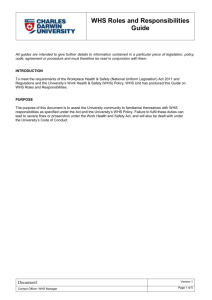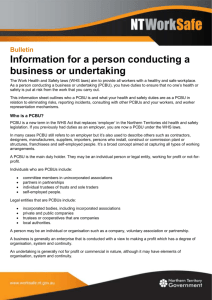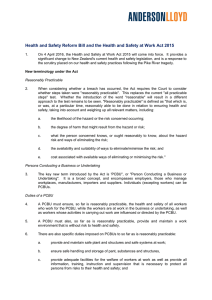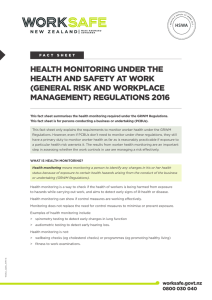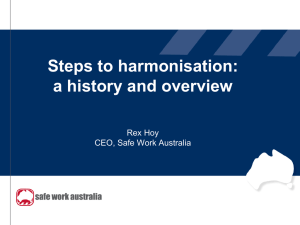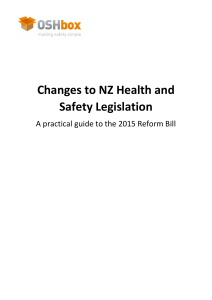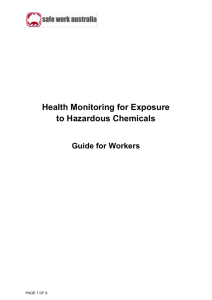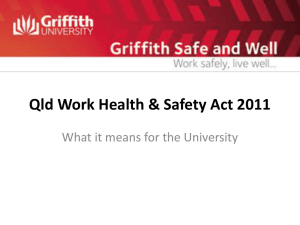Wilco Special Alert Health and Safety 2015
advertisement
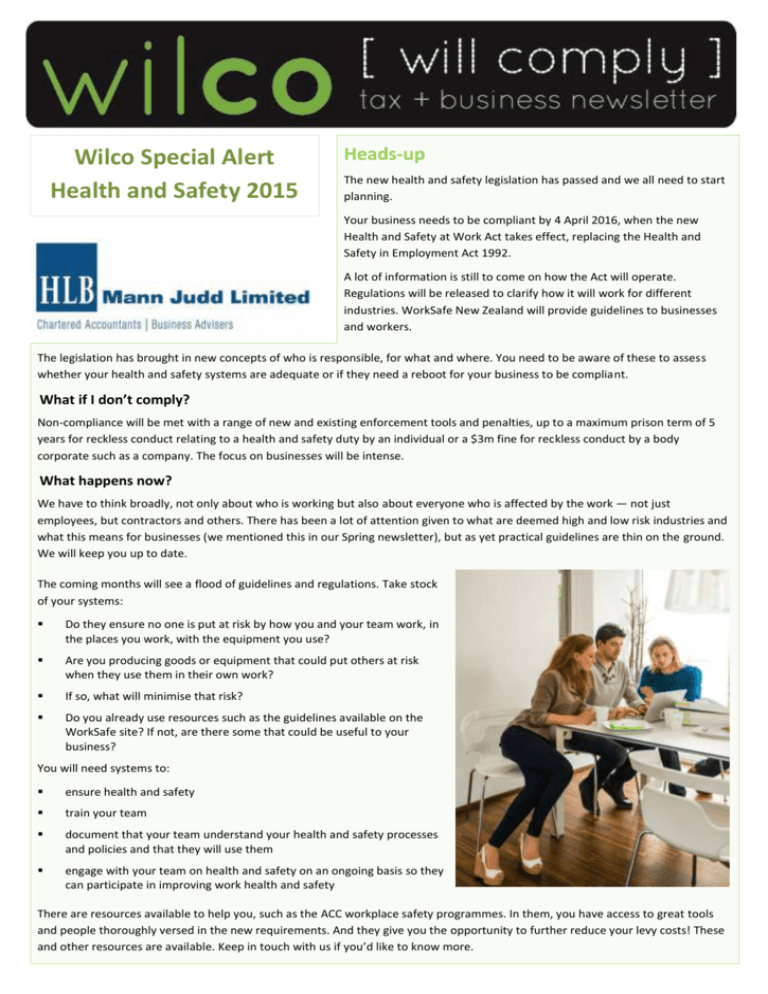
Wilco Special Alert Health and Safety 2015 Heads-up The new health and safety legislation has passed and we all need to start planning. Your business needs to be compliant by 4 April 2016, when the new Health and Safety at Work Act takes effect, replacing the Health and Safety in Employment Act 1992. A lot of information is still to come on how the Act will operate. Regulations will be released to clarify how it will work for different industries. WorkSafe New Zealand will provide guidelines to businesses and workers. The legislation has brought in new concepts of who is responsible, for what and where. You need to be aware of these to assess whether your health and safety systems are adequate or if they need a reboot for your business to be compliant. What if I don’t comply? Non-compliance will be met with a range of new and existing enforcement tools and penalties, up to a maximum prison term of 5 years for reckless conduct relating to a health and safety duty by an individual or a $3m fine for reckless conduct by a body corporate such as a company. The focus on businesses will be intense. What happens now? We have to think broadly, not only about who is working but also about everyone who is affected by the work — not just employees, but contractors and others. There has been a lot of attention given to what are deemed high and low risk industries and what this means for businesses (we mentioned this in our Spring newsletter), but as yet practical guidelines are thin on the ground. We will keep you up to date. The coming months will see a flood of guidelines and regulations. Take stock of your systems: Do they ensure no one is put at risk by how you and your team work, in the places you work, with the equipment you use? Are you producing goods or equipment that could put others at risk when they use them in their own work? If so, what will minimise that risk? Do you already use resources such as the guidelines available on the WorkSafe site? If not, are there some that could be useful to your business? You will need systems to: ensure health and safety train your team document that your team understand your health and safety processes and policies and that they will use them engage with your team on health and safety on an ongoing basis so they can participate in improving work health and safety There are resources available to help you, such as the ACC workplace safety programmes. In them, you have access to great tools and people thoroughly versed in the new requirements. And they give you the opportunity to further reduce your levy costs! These and other resources are available. Keep in touch with us if you’d like to know more. Key concepts Everyone’s responsible It’s about the work Steps to take Everyone is responsible for health and safety. The new Act accepts modern working arrangements are complex and shifts responsibilities from employers and employees to the PCBU (Person Conducting a Business or Undertaking), officers of PCBUs, workers and others. Health and safety responsibility is not limited to the physical workplace but extends to the whole process of work carried out as part of the business or undertaking, wherever it takes place, whomever it affects. The work is the defining principle. For example, a farmer’s duty to manage and control risk on the farm doesn’t apply to recreational users coming onto farm land apart from where farm work is being carried out in that part of the farm at the time. Anyone with responsibilities for health and safety must take all steps that are ‘reasonably practicable’. It’s about what’s reasonable for a business to do, recognising workplace realities. Officers of PCBUs Workers and others For a PCBU that is a company, its directors are officers; for a partnership, its partners (but note in limited partnerships, only general partners are officers). For other structures or undertakings, officers will be people holding positions comparable to company director, such as board members. Officers do not have to ensure the health and safety of the PCBU’s workers but must exercise due diligence to ensure the PCBU complies with its duties. Each worker is responsible for his or her own safety and that of others, complying with any reasonable instruction from the PCBU and cooperating with any reasonable policy or procedure the PCBU has notified to workers. A PCBU has primary duty of care to ensure the health and safety of workers and others affected by the work the PCBU carries out. So far, much of the focus has been on PCBUs, their duties and when and how they must work with others to ensure safety at work. However, everyone concerned has responsibility according to what influence and control they have in the situation. What this actually means will be hammered out more thoroughly, but at present ‘reasonably practicable’ might include an assessment of whether there is a disproportionate cost to address risk. PCBUs A PCBU can be a person, such as a sole trader or a self-employed person. More usually it will be a business entity, such as a company. ‘PCBU’ takes in both for profit and non-profit enterprises that employ people. Examples of PCBUs include all the standard types of businesses, as well as government departments, local councils, schools, partnerships and not-for-profit organisations that employ staff. A purely volunteer organisation where volunteers work together for community purposes and which does not have any employees is not a PCBU. A volunteer organisation with one or more employees is a PCBU with a duty to ensure the health and safety of its workers and others. When more than one PCBU is involved in a project, responsibilities for health and safety overlap. The PCBUs need to work together to ensure their work does not pose risks to people’s health and safety. Construction sites are a good example. Where they affect each other’s work or have a cross-over of work, subcontractors such as builders, electricians and plumbers will need to work with each other to meet their duties. This is the case even if they don’t have a direct contractual relationship with each other. Contracting and supply chains will also have responsibilities. Other people in the workplace include visitors or customers and they too have health and safety duties — it’s all about taking your share of the responsibility for what you can control. Disclaimer This publication has been carefully prepared, but it has been written in general terms only. The publication should not be relied upon to provide specific information without also obtaining appropriate professional advice after detailed examination of your particular situation. Phone: +64 (9) 303 2243 Fax: +64 (9) 377 3053 Auckland Office: Level 6, 57 Symonds Street PO Box 43, Auckland 1140, New Zealand Website: www.hlb.co.nz

